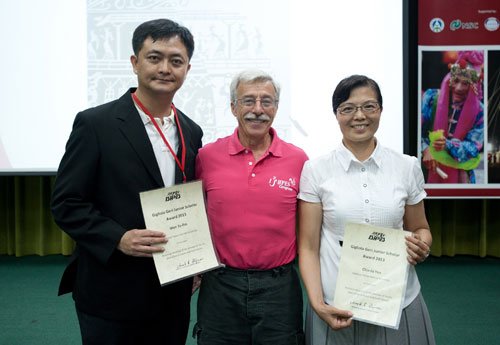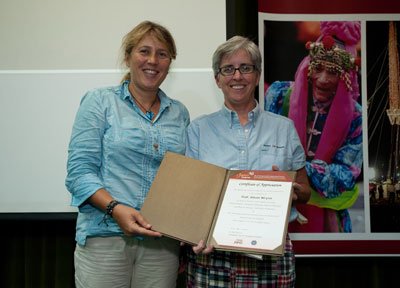The 2013 Gigliola Gori Junior Scholar Award was won by Taiwanese students, Chia-Ju Yen and To-Pin Wen for their paper “Historical discovery of the passage of Tou Hu from China to Japan and South Korea”. Both authors are regular participants of the ISHPES congresses. For several years we could observe Chia-Ju´s discipline, perseverance, and conscientious efforts in pursuit of her Ph.D. degree. Her co-author, To-Pin Wen has demonstrated similar diligence in his own academic career with many publications and presentations. Both have recently obtained their Ph.D. degree.
| Historical discovery of the passage of Tou Hu from China to Japan and South Korea
Tou Hu is an ancient Chinese game which involves throwing arrows into a vase by hand. It was not only popular in ancient China from 770 BC to 1900 AD, but also spread to ancient Korea and Japan between 500 and 600 AD. The aims of this paper are to find out the historical trajectory of Tou Hu from China to Korea and Japan and its related historical backgrounds. This research adopted the analysis of historical materials. With a distinctive national character, Tou Hu originated in the period of the times of Spring and Autumn (770-476 BC) and flourished in the period of the times Warring States (403-221BC). Its rise was closely related to the feudal system and is described in the separation of literary and martial arts. It was sustained and modified during the Three Kingdoms period (220-280 AD) and the Wei, Chin, Northern & Southern Dynasties (280-589 AD). During the Sui (581-619 AD) and Tang Dynasties (618-907 AD), due to the intensive development of politics and economics, sports activities became more popular and diverse. Moreover, due to its advanced civilization, wealth and vast territorial expanse, China had a great influence over her neighboring states. The findings of the passage of Tou Hu, as introduced by China, to Japan and South Korea showed that: |
 |
A: With the intensive attractiveness of Chinese culture and Buddhism, many monks and students visited China and brought back many classical books back to Korea. Some of them included the information of Tou-Hu. It is estimated by the analysis of historical materials that Tou Hu was initially introduced to South Korea under Emperor Wu during the Southern Dynasty (AD 503-549). Baiji, a kingdom of Korea had sent ambassadors to visit Emperor Wu learning Buddhist scribes, who learned Three Rites.
B: Under the same situation but almost one hundred years later, from a letter of credence showed that Tou Hu was first introduced to Japan during the Sui Dynasties within the period AD 607 – AD 608. OnonoImoko came to China twice to learn the Chinese rites. Later, Japan sent envoys, students and educated monks to China frequently.
Thus, offering chances for learning Chinese culture and having more flexibility, Tou Hu could spread to Japan and Korea and was popular in the upper class and among aristocratic women. Tou Hu is elegant and lightweight; Chinese Confucianism is also one of the important factors that have increased its popularity.


